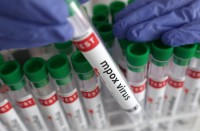Endocrine disruptors are chemicals found in everyday products. They interfere with the normal functioning of human hormones and can have a harmful effect on health and reproduction.
The endocrine system is a network of glands which produce and secrete hormones that regulate crucial body functions, including growth, reproduction, sleep and energy levels. Transported through the bloodstream, each hormone is tailor-made to act on specific organs or tissues.
When chemicals from the environment – even in tiny doses – mimic hormones, they trick the body and interfere with this intricate network. These are endocrine disruptors, found in everyday products.
Numerous studies have shown they can reduce human fertility, contribute to the explosion of diabetes and obesity, or even trigger certain hormone-dependent cancers. Exposure during pregnancy can also affect normal genital and brain development in foetuses.
Most known disrupters are manmade. They can be found in pesticides, paint, toys, cosmetics and even food. Among the most well-known are:
-Diethyl stilbestrol (DES), a medication prescribed in the past during pregnancy, linked to cancer and congenital malformation.
– Parabens, commonly found in beauty products,
-and bisphenol A, a plasticizer banned from baby bottles in Europe since 2011.
Prevalent in the water cycle and ground, these chemicals are contaminating ecosystems. We don’t know how many there are, how dangerous they are, even in low doses, or the risks associated when these substances are combined.
Scientists and charities are calling for legislation but the lack of a clear, internationally recognised definition has hampered regulation.
STÉPHANE KOGUC, KATHERINE LEVY SPENCER / AFP VIDEOGRAPHICS / AFP








